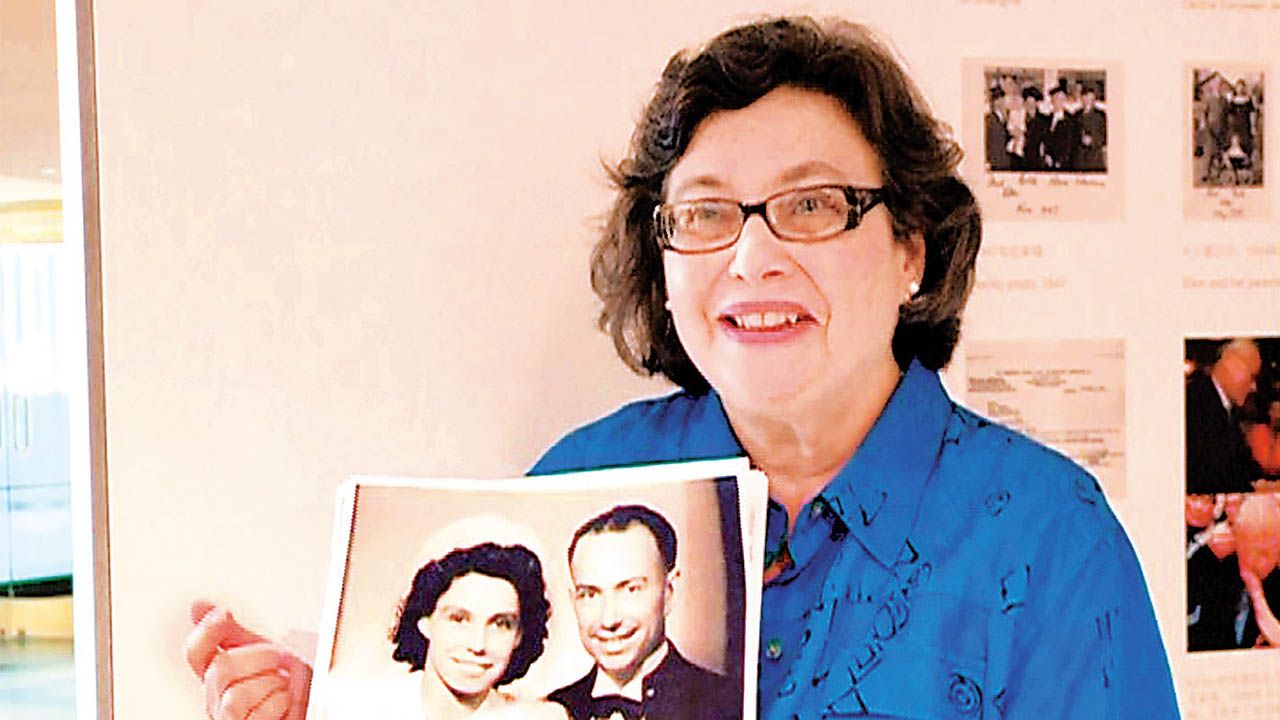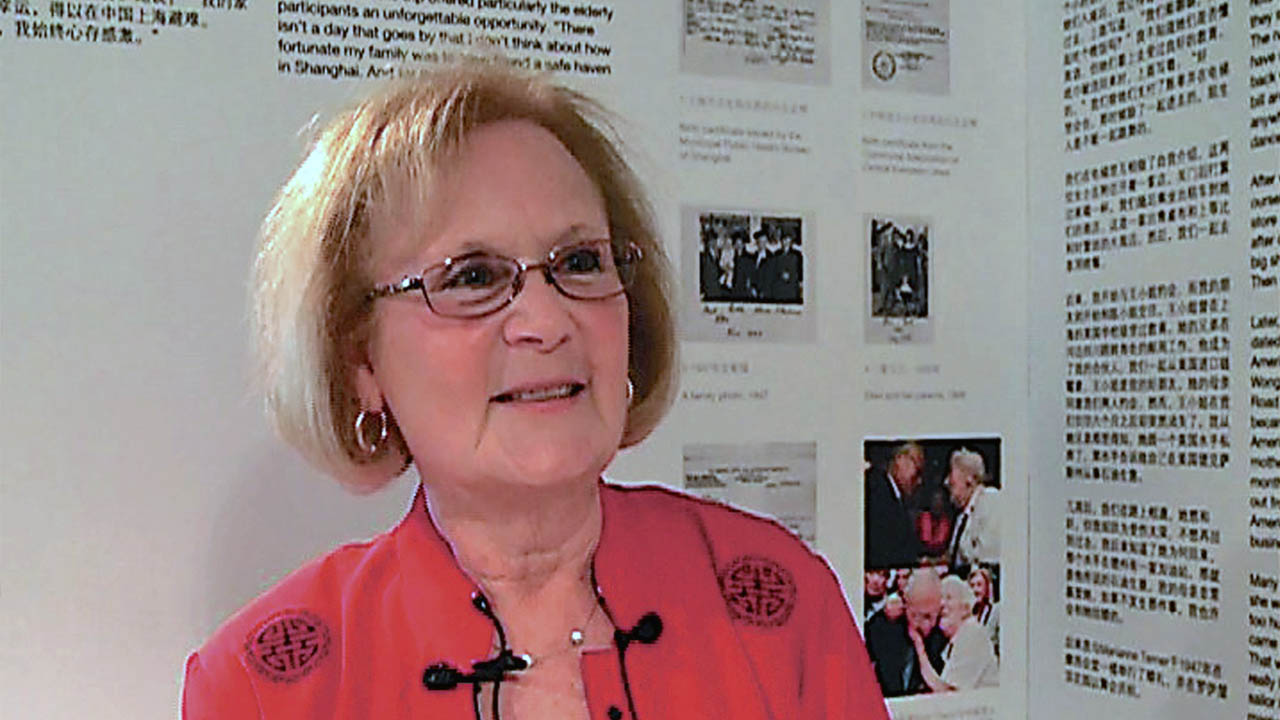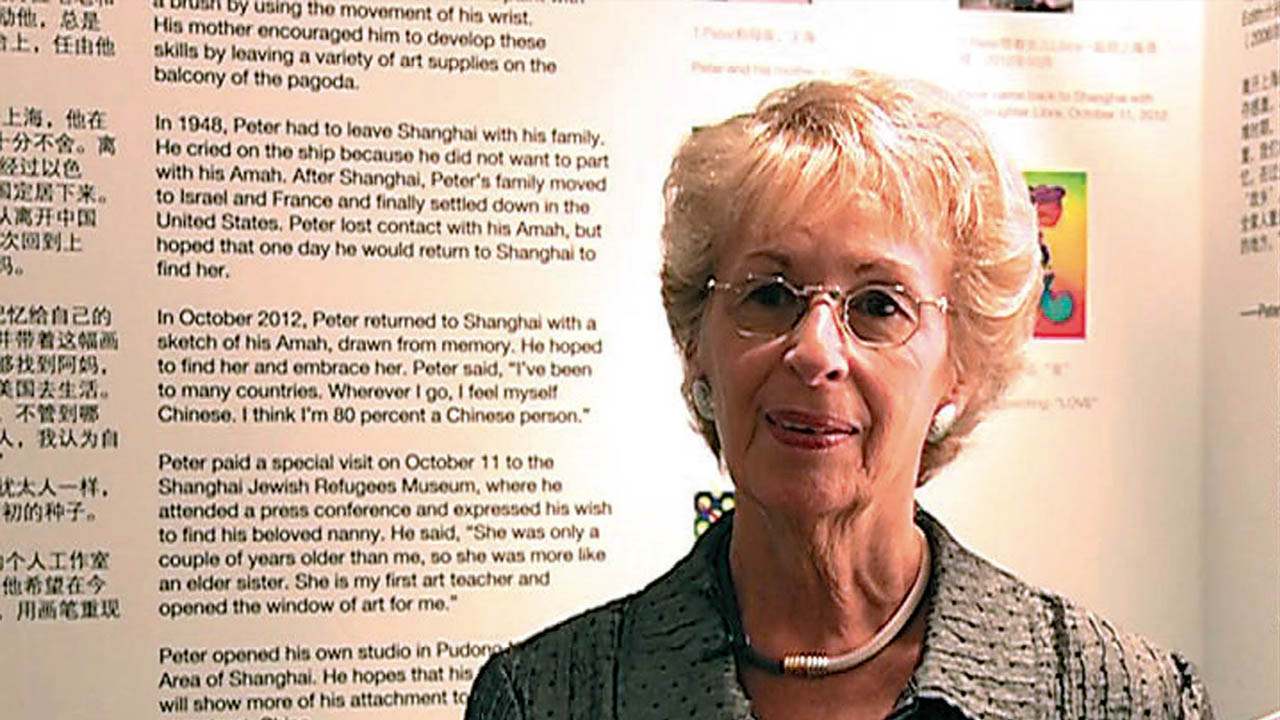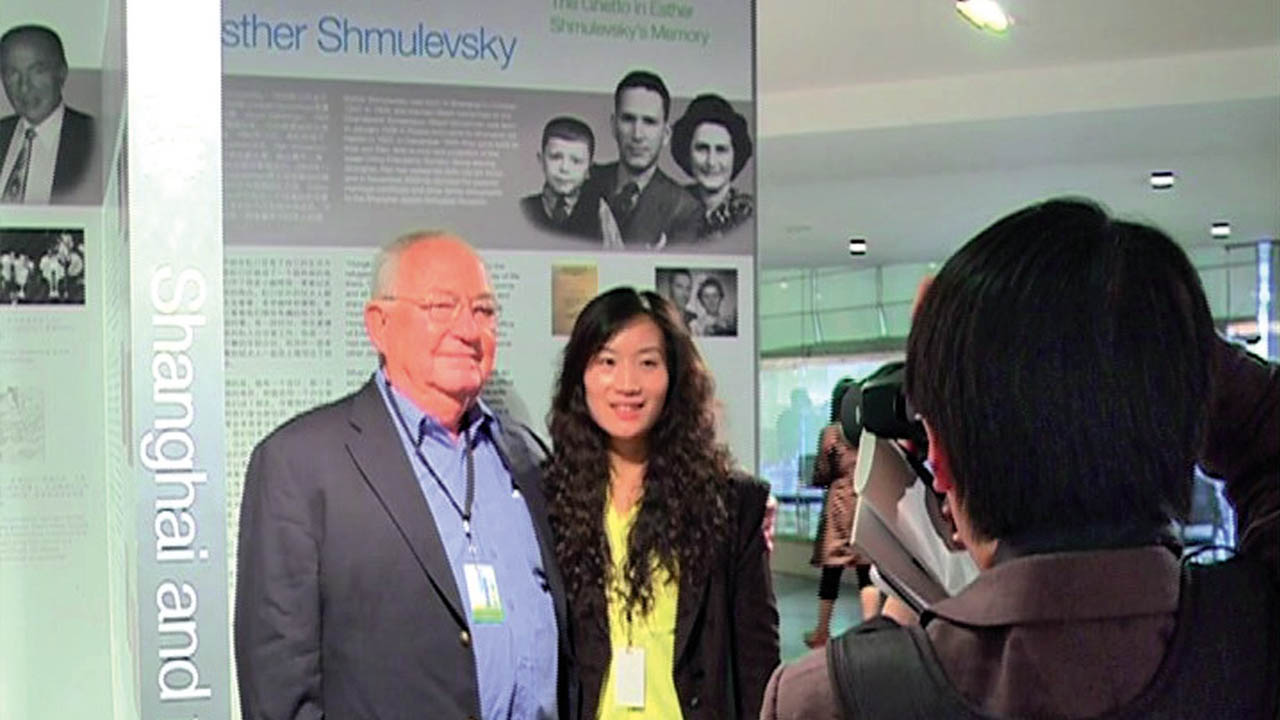Aileen Jacobson
Press Contact
SISU News Center, Office of Communications and Public Affairs
Tel : +86 (21) 3537 2378
Email : news@shisu.edu.cn
Address :550 Dalian Road (W), Shanghai 200083, China
Further Reading
JEWS IN SHANGHAI | Four Shanghai Babies Reunited at the Rockefeller Center
15 September 2016 | By Li Guangjun, Li Weiwei / trans. Huang Xie'an | Copyedited by Gu Yiqing
|
I |
n September 2013, the Jewish Refugees and Shanghai exhibition telling the life stories of 16 former Jewish refugees in Shanghai was open at the Rockefeller Center of New York. Four Shanghai Babies, Jewish babies born in Shanghai during WWII, attended the opening ceremony and attracted a lot of attention. When they recalled the special history, the Shanghai Babies, as well as their children, were very emotional.
The four Shanghai Babies were Aileen Jacobson, Ellen Chaim Kracko, Yvonne Daniel and Ran Veinerman.
Aileen arrived very early in the morning for an interview. Ellen wore a special red Chinese garment she bought in Shanghai. Yvonne brought a family photo album as a gift to Shanghai Jewish Refugees Museum. And Ran came from Israel, and in order to attend the opening ceremony, she changed her trip plan in the USA.
Aileen was born in Shanghai on July 21, 1947. At the interview, she told the story of how her father and mother met and fell in love with each other in Shanghai. She also showed some old pictures and exclaimed from time to time, “How beautiful my mom was!”
Her parents had fled to Shanghai in 1939, but they’re strangers to each other when they arrived in Shanghai. Her mother, Ilse Ludomer, was barely 18 when she came to Shanghai. She then worked as a babysitter and a waitress in cafes in Shanghai. Her father Erich Jacobsohn (which he changed to Jacobson when he came to the USA from Shanghai) was 28 when he landed in Shanghai and he made a living as a translator and an English teacher. In 1945, Ilse and Erich met during an air raid drill and fell in love with each other very soon. In 1946, they were married and on July 21, 1947, they gave birth to Aileen. The family left Shanghai and moved to the USA when Aileen was just 3 months old.
Aileen said she was writing a book to tell the unusual story of her parents. She thanked Shanghai for giving the people in darkness a beacon of hope and saving them from the Holocaust. Shanghai had not only saved Jews, but also the world.
Ellen was born in Shanghai on March 12, 1947. Her parents were Jewish refugees from Germany. In 1949, Ellen left Shanghai for Israel in 1949 and is now living in the USA.
In 2006, Ellen escorted her mother Ruth Chaim, who was 87 years old, to Shanghai to attend a reunion. Among the former Jewish refugees coming to the reunion, 13 were born in Shanghai, and Ellen was the youngest of them. Ellen said this reunion was extremely valuable, especially for the older generation. It might be their last chance to look at Shanghai. She said, “My family was lucky to be able to take refuge in Shanghai. We’re always grateful.”
Ellen also said, “I have attended many Rickshaw Reunions. The first time was in New York in 1985. I also attended the reunion in Toronto in 2004. It was great. But I must say, of all the reunions, I think Shanghai 2006 was the greatest. It was a very emotional event. Every one of us felt the kindness of the local people. We’re very much obliged to them. The Chinese people had been very kind to us when we came as refugees. They treated us like friends. Our gratitude is beyond words.”
Yvonne Daniel was born in Shanghai on October 5, 1944. Her parents had fled to Shanghai from Germany as stateless refugees. Yvonne once had a brother who was also born in Shanghai, but he died when he was about one and a half years old. As her mother told her, her brother had died of malnutrition. It was a tough time for new born babies, so more Jewish refugees in Shanghai chose to abort their baby.
Yvonne could barely continue the interview as she was highly emotional. She said she would get very excited when she recalled this special history. But for the city of Shanghai and its people, over 20,000 refugees would not have survived. Yvonne said that, as her parents were weak and sick these years, she had not been able to learn more from them about what life was like in Shanghai. Therefore, she had tried to attend as many rickshaw reunions as she could, with the hope of tracing back the history based on the accounts of other former refugees.
For many years, Yvonne have been telling the story of Jewish refugees in Shanghai to people in a number of communities and organizations in the USA. She said she would continue the effort to communicate the history to more people from more corners of the world and let them understand the connection between Shanghai and Jews.
Ran Veinerman was born in December 1940. Ran’s mother Esther Veinerman was born in Shanghai in October 1920 and married with Albert Veinerman in 1939 at the Ohel Moishe Synagogue. Albert was born in Russia and came to Shanghai via Harbin. Ran is now living in Haifa, Israel, and serves as vice president of Israel China Friendship Society. He has revisited Shanghai 6 times. In November 2009, Ran donated his parents’ marriage certificate and some other old documents to Shanghai Jewish Refugees Museum.
Ran brought two friends to the exhibition. One of them was Larry Hardoon, a descendant of the Hardoon family which was extremely rich and prominent in Shanghai in the first half of the 20th century. Ran said that he was very happy to attend the exhibition in New York and the exhibition told a very good story. He was ready to help Shanghai Jewish Refugees Museum communicate with the world and promote the relationship between the Museum and the Hardoon family.
Press Contact
SISU News Center, Office of Communications and Public Affairs
Tel : +86 (21) 3537 2378
Email : news@shisu.edu.cn
Address :550 Dalian Road (W), Shanghai 200083, China





